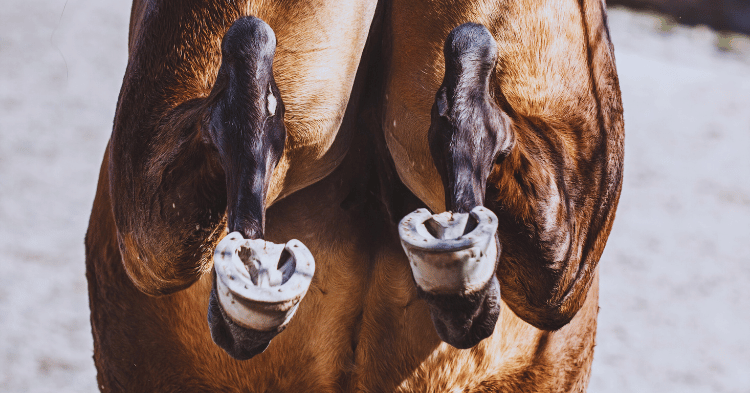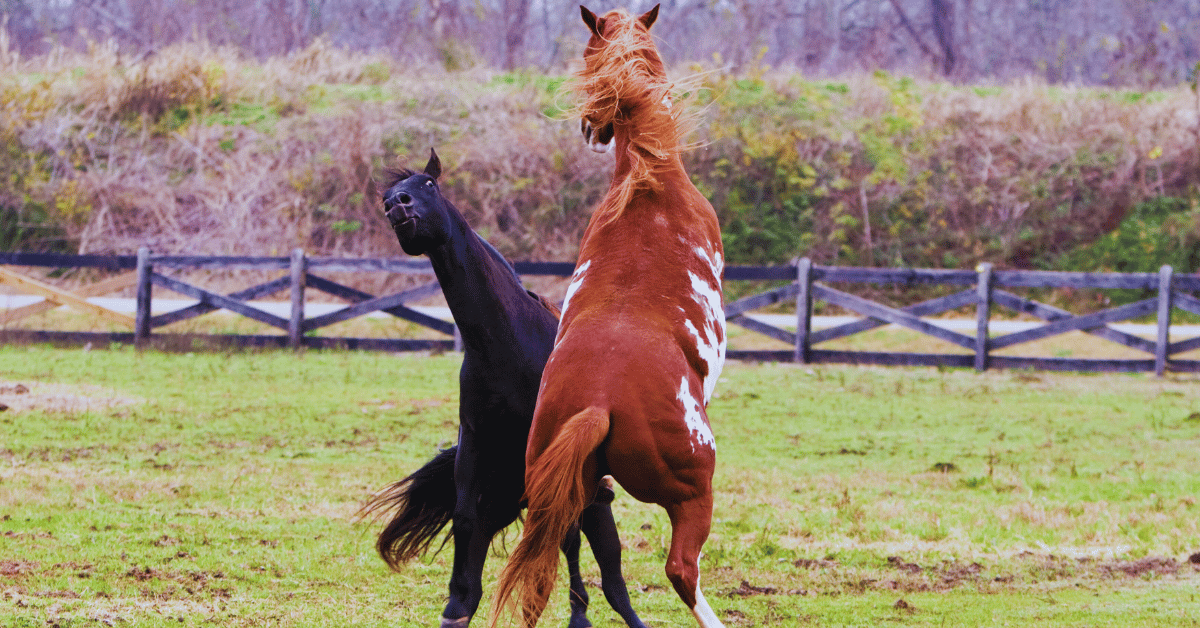The sheer power and grace of a horse are mesmerizing, but with that power comes potential danger. A question that often arises is, can a horse kick kill you? Unfortunately, the answer is yes. A horse’s kick is not only swift but incredibly forceful, delivering over 2,000 pounds of pressure per square inch—enough to break bones or cause life-threatening injuries.
The risk isn’t just theoretical. A poorly timed move or a startled horse can lead to severe consequences, especially if the kick lands on vulnerable areas like the head or chest. But this isn’t to instill fear—understanding why horses kick and how to read their body language is key to staying safe.
From learning the warning signs of agitation to practicing smart handling techniques, you can significantly reduce the risks. Let’s explore the reasons behind this powerful instinct and how to safeguard yourself around these magnificent animals.
Understanding Horse Kicks

Understanding the potential risks associated with horse kicks is crucial for anyone involved with these majestic animals. This section delves into the force and impact of horse kicks and the types of injuries they can cause.
Force and Impact of Horse Kicks
The strength behind a horse kick is formidable, carrying about 2,000 pounds of force (Vetericyn). Such immense power can result in various levels of impact, from minor bruising to severe, life-threatening injuries. Below is a table representing the potential force exerted by a horse kick compared to other common impacts.
| Impact Source | Force (Pounds) |
|---|---|
| Human Punch | 150 – 180 |
| Car Crash (30 mph) | 2,000 – 3,000 |
| Horse Kick | 2,000 |
A horse kick can break bones in the animal’s hooves if it strikes a hard surface. The same level of force can be extremely dangerous for humans, causing significant damage.
Injuries Caused by Horse Kicks
Injuries from horse kicks are often severe due to the concentrated force delivered by the hoof. According to research, 22% of injuries caused by horses result from kicks, with these injuries leading to various types of trauma (NCBI). The table below depicts the common injury types from horse kicks:
| Injury Type | % of Incidents |
|---|---|
| Extremity Fractures | 33% |
| Head Injuries | 27% |
| Abdominal Injuries | 40% |
Such injuries often occur because the force from the kick is transferred from the hoof to a small area, causing internal injuries akin to blunt stab wounds. Severe impacts could even lead to cardiac arrest, underscoring the dangerous potential of a horse kick.
For those handling or riding horses, it’s vital to be aware of these risks and take appropriate safety measures. Building a strong bond of trust with your horse and implementing specific safety precautions are essential steps to minimize the risk of kicks. To learn more about safety measures, visit safety measures and caution around horses.
Understanding the immense force behind a horse kick and the injuries it can cause is essential for anyone involved with horses. Always exercise caution and respect around these powerful animals to prevent accidents.
For more answers to common horse-related questions, check out our articles on can horses cry and do horses sleep standing up.
Factors Influencing Horse Kicks

Understanding the factors that influence horse kicks can help in preventing and managing the risks associated with them. This section delves into the behavioral reasons and the strength behind horse kicks.
Behavioral Reasons for Kicking
Horses kick for various reasons, mostly driven by their instincts and emotions. Here are some common behavioral reasons:
- Defensive Kicks: Horses may kick to protect themselves and their herd from perceived threats. This is a natural defensive mechanism.
- Dominance Kicks: These kicks are used to assert hierarchy within the herd, showing dominance over other horses.
- Playful Kicks: Often seen in young horses, playful kicks are a sign of energy and enjoyment.
- Discomfort Kicks: When a horse is in pain or discomfort, it may kick as a way of expressing its distress.
- Frustration Kicks: Horses may also kick to show impatience or moodiness, especially when they are forced to do something they don’t want to do.
For a more detailed understanding of horse behavior, see our article on do horses like to be ridden.
Strength and Force of Horse Kicks
The power behind a horse kick is formidable and can be influenced by several factors such as breed, size, and physical condition. A horse kick carries about 2,000 pounds of force, which is strong enough to cause severe injuries ranging from bruising to fractures or even cardiac arrest in the victim (Vetericyn).
| Factor | Influence on Kick Strength |
|---|---|
| Breed and Size | Larger breeds typically have stronger kicks |
| Age | Younger horses tend to have more energy |
| Physical Condition | Healthier horses exert greater force |
| Emotional State | Fear can increase the strength of the kick |
| Position and Balance | Better balance leads to more powerful kicks |
Most injuries caused by horse kicks involve extremities and head injuries, especially in unmounted equestrians who often receive face and abdomen injuries. Understanding these factors can help horse owners take appropriate precautions to minimize the risks.
For more on related topics, explore:
Preventing Horse Kicks
Building Trust with Horses
Establishing trust with a horse is a critical step in reducing the likelihood of kicks. When a horse feels comfortable and secure, they are less likely to exhibit defensive behaviors. Here are some effective strategies for building trust:
- Offer Treats: Giving treats can serve as a positive reinforcement and help build a sense of trust.
- Grooming: Start grooming at safe areas like the shoulders. Slowly and gradually get the horse accustomed to touch and handling.
- Consistency: Be consistent in your approach and interactions to build a strong, positive relationship.
- Patience and Training: Working gradually and patiently with a horse, especially those with past trauma or lack of training, helps build their confidence and trust.
Taking these steps can help in creating a safer environment for both the horse and the handler.
Safety Measures and Caution around Horses
Preventing horse kicks also involves implementing specific safety measures and exercising caution when around horses. Here are some key practices:
- Approach Calmly: Always approach horses calmly and avoid sudden movements or loud noises that could startle them.
- Watch Body Language: Pay close attention to the horse’s body language. Signs of discomfort, such as pinned ears or a swishing tail, indicate that the horse is feeling stressed or threatened.
- Maintain Safe Distance: Avoid standing directly behind a horse or near its rump. If you must walk behind a horse, ensure you are at a safe distance to avoid being kicked (Bay Area Equestrian Network).
- Proper Equipment: Use proper equipment and ensure it is in good condition. For example, a well-fitted saddle can prevent discomfort that might cause a horse to kick.
- Stress-Free Environment: Keep the surroundings as stress-free as possible. A stressed horse is more likely to kick.
- Regular Health Checks: Conduct regular health checks to ensure the horse is not in pain, which could be a reason for kicking.
By incorporating these safety measures and understanding more about horse behavior, you can significantly reduce the risks of being kicked. For additional insights on related topics, you might explore can horse sleep standing up and do horses sleep standing up.
Managing and Treating Horse Kick Injuries
When dealing with horse kick injuries, appropriate treatment and care are paramount for ensuring a successful recovery. Here, we’ll look into effective treatment approaches and the critical role veterinary care plays in managing these injuries.
Treatment Approaches for Horse Kick Injuries
Most kick injuries can be managed with conservative care and pain management. Ensuring the horse is comfortable and pain-free is crucial to facilitate healing and prevent further injuries due to discomfort (Just Horse Riders).
Key Treatment Steps:
- Pain Management: Administer appropriate pain relief to keep the horse calm and aid in the healing process.
- Wound Care: Clean and dress any open wounds to prevent infection.
- Rest: Ensure the horse has plenty of time to rest and recover in a safe and comfortable environment.
- Observation: Monitor the injury for signs of complications, such as swelling, infection, or worsening pain.
Management of Specific Injuries:
- Hepatic Injury: In cases of hepatic injury due to a horse kick, conservative management is often effective, with only a few cases requiring surgical intervention such as laparotomy and liver resection (NCBI).
- Internal Injuries: Close observation is recommended for internal organ injuries, as the severity might be underestimated (NCBI).
| Injury Type | Treatment Approach |
|---|---|
| Soft Tissue Injury | Rest, pain management, and anti-inflammatory medications |
| Fractures | Immobilization, possible surgical intervention, and extended rest |
| Internal Organ Injury | Conservative management, surgical intervention in severe cases |
Importance of Veterinary Care
Veterinary care is essential in the management and treatment of horse kick injuries. A veterinarian can provide a professional assessment of the injury’s severity and recommend the best course of action.
Roles of Veterinary Care:
- Diagnosis: Using imaging techniques such as X-rays or ultrasounds to assess the injury accurately.
- Treatment Plan: Developing a comprehensive treatment plan that includes pain management, wound care, and rehabilitation.
- Surgery: Performing surgical procedures if necessary, particularly for severe injuries like fractures or internal organ damage.
- Monitoring: Regular follow-ups to monitor the horse’s progress and adjust the treatment plan as needed.
It’s crucial for horse owners to understand that veterinary care not only aids in recovery but also helps prevent further complications. For more information on horse care and behavior, check out related topics such as do horses get tired of standing and do horses know their names.
By adhering to these treatment approaches and recognizing the indispensable role of veterinary care, horse owners can ensure their animals receive the best possible care during their recovery from kick injuries.

